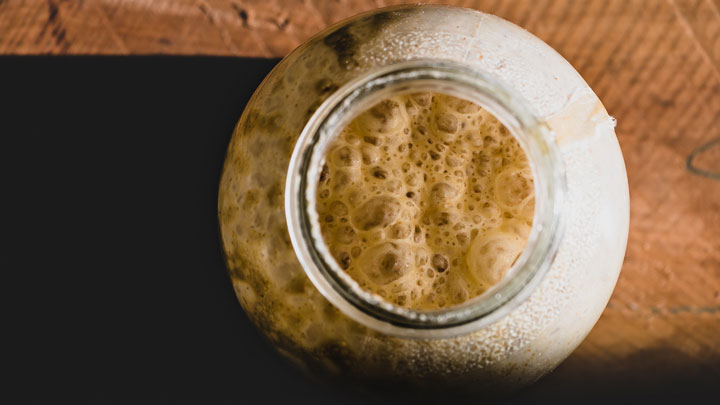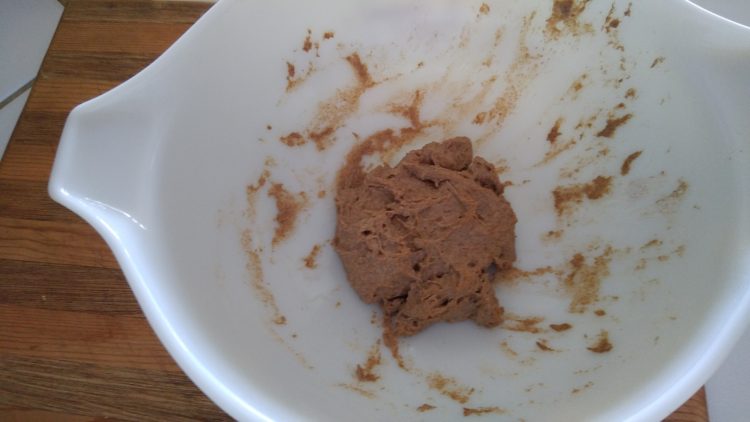
Sourdough bread–one of the oldest forms of our favorite, gluten-based snacks–has become something of a resurgent celebrity. Amidst the global pandemic, people of various interests and backgrounds suddenly found themselves with more time on their hands, and this tricky-but-delectable sandwich-component became a favorite new skill to develop. Of course, out on the homestead, the pandemic didn’t affect life very much, so it was a trend I mostly overlooked. Now however, with winter’s chill discouraging unnecessary trips outside, I think it’s high time to bake up a little sourdough.
The trick with sourdough is the starter. For those just beginning, adding a little yeast may not be a bad idea, but for the traditionalist, a no-yeast approach is the only way to go. Keep in mind, a sourdough starter is a kind of commitment. You’ll need to refrigerate it, and feed it weekly to keep it going. But, once you have one, you’ll have a component that can give your breads a unique taste for years to come.
To begin your starter, combine a cup of whole-rye flour with a half-cup of cool, but not cold, water. Glass or stainless steel containers work best for this, and try to find one at least a quart in size–this sucker is gonna grow. Stir your mixture thoroughly, until there is no dry material left. Cover, and let sit in room temperature (about 70) for a full day.
After those 24 hours have passed, toss half the starter, and feed the remaining starter with a cup of unbleached flour, and another half-cup of cool water. If your house runs a little cool, feel free to bump the temp on this to lukewarm. Again, take this mixture, cover it, and let sit for 24 hours.
As we come to the third day, you will likely start to see activity. There will be bubbling, a sweet aroma, and it will likely have grown a tad. This is all evidence of fermentation proceeding as hoped. We want to ramp up the process from here however, and will now begin feeding it (providing it new material to ferment) twice a day. For each feeding, mix the starter thoroughly, remove all but a heaping half-cup of material, stir in a cup of unbleached flour and a half-cup of cool water, mix, cover and let sit. Try to allow as close to 12 hours as possible between feedings. Repeat this process until your starter has grown sufficiently, and is bubbly (this will likely be day seven, but could take longer).
Once ready, give the starter a final feeding, and let it sit for at least eight hours, to ensure it stays bubbling and active. Remove however much you need for your recipe (if more than a cup, feed it a few times without discarding, until you have enough), and viola! You have the first component for your sourdough project.
Keep what starter you have left over, feed it the usual cup of flour and half-cup of water, and let it sit unrefrigerated for a few hours to get back on its feet, loosely covered and unrefrigerated. Once done, store it in your refrigerator, feeding weekly, and you’ll always have a starter on hand whenever you get the urge for a nice sourdough.
Tune back in next week for step two in the process: how to actually mix and bake the bread.
A humble homesteader based in an undisclosed location, Lars Drecker splits his time between tending his little slice of self-sustaining heaven, and bothering his neighbors to do his work for him. This is mainly the fault of a debilitating predilection for fishing, hunting, camping and all other things outdoors. When not engaged in any of the above activities, you can normally find him broken down on the side of the road, in some piece of junk he just “fixed-up.”

Barkley Burker says
Attachment
1 cup rye 1/2 cup water…this doesn’t look right?????
bruce says
I have starter here, on my countertop, that is documented back to the Alaskain gold rush of 1800s, sits on the counter, fed a tablespoon or so of flower every day, used as needed, can be dried and saved for just in case, excess starter is made into sourdough waffles, never tossed out., when making waffles, any left over waffles, are dried and given to the dog as treats. Your flour will set the flavor of your sourdough. Bread flour for bread and roles, all purpose, I use to feed starter, equal parts flour and decorated water. If you would like some of this wonderful starter I have, contact me.
Matt says
I thought you had to feed it a half a cup of flour and half cup of water daily?
Matthew says
Nope, you can go longer between feedings once it’s established. You can also throw it in the fridge with a loose fitting cap (not air tight) for a week or more. Then pull it out and let stand at room temp before feeding again. It may take 1-2 feedings to wake it up. I have had mine for over 30 years through many moves, still makes fantastic bread.
barkley burker says
as ya can see from photo this isn’t right. Send me some starter, please